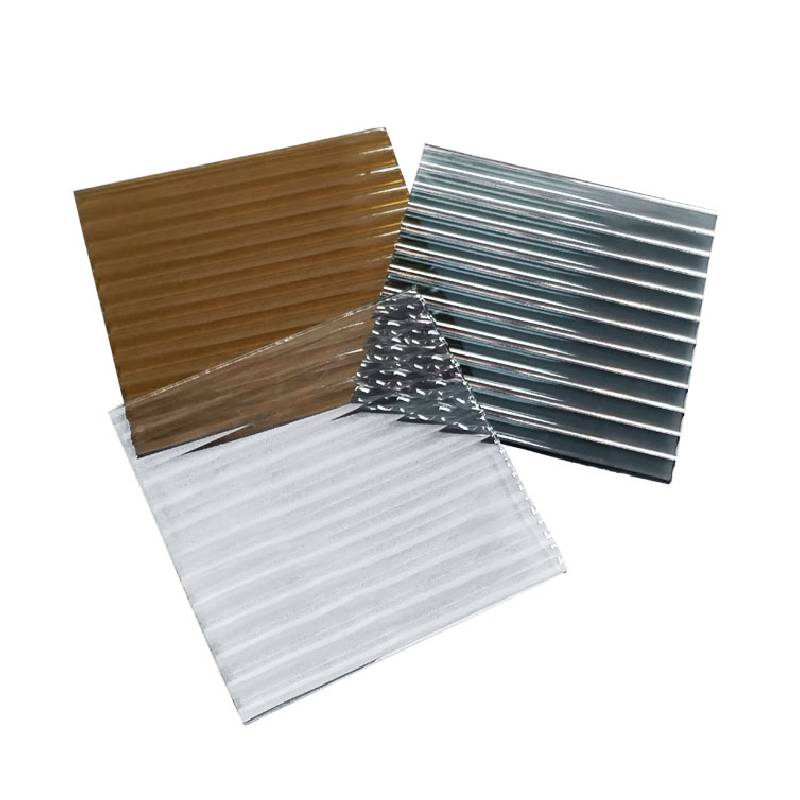The Strength of Toughened Glass A Comprehensive Overview
Toughened glass, also known as tempered glass, is a type of safety glass that has undergone a special thermal treatment to enhance its strength and durability. The process of toughening glass involves heating it to above 600 degrees Celsius and then rapidly cooling it. This creates a significant amount of internal stress in the glass, which in turn makes it much stronger than ordinary glass. The result is a material that can withstand greater impacts, thermal stress, and remains intact when shattered, making it an ideal choice for various applications in modern design and architecture.
The Strength of Toughened Glass A Comprehensive Overview
Safety is perhaps the most significant advantage of toughened glass. When ordinary glass breaks, it shatters into sharp and hazardous shards that can cause severe injuries. In contrast, toughened glass breaks into small, blunt pieces that are less likely to cause harm. This property is especially important in environments where safety is a concern, such as in public spaces, schools, and homes. The reduced risk of injury makes toughened glass a preferred material in many industries, including automotive, where it is used in windshields and side windows.
toughened glass material
Another noteworthy aspect of toughened glass is its thermal resistance. The toughening process allows the glass to withstand sudden temperature changes without cracking, making it ideal for use in situations where thermal shock is a possibility. For example, toughened glass is commonly used in ovens and fireplaces, where it is subjected to extreme heat. This thermal stability adds to its versatility and reliability in various contexts.
Toughened glass is also prized for its aesthetic appeal. It is available in various thicknesses and can be manufactured in a range of colors and finishes. This flexibility allows architects and designers to create stunning visual effects in their projects. The clarity and the ability to let through natural light make toughened glass an attractive option for both interior and exterior applications. Its modern look complements contemporary architecture and caters to changing preferences in design.
In terms of sustainability, toughened glass is an environmentally friendly material. It is recyclable, and the production process often uses less energy compared to other building materials. Moreover, as a highly durable product, toughened glass reduces the need for replacements, ultimately leading to less waste. Its use in energy-efficient buildings can help reduce heating and cooling costs, since it can be treated to reflect heat or UV rays.
In conclusion, toughened glass is a remarkable material that combines strength, safety, and aesthetic appeal. It has revolutionized the way designers and architects approach modern construction and interior design. As technology continues to advance, we can expect even more innovative applications and enhancements in the capabilities of toughened glass. Its integral role in contemporary architecture underscores its importance and the potential for future growth in this dynamic industry. Whether utilized in residential settings or commercial buildings, toughened glass remains a lasting testament to both functionality and beauty in design.
 Afrikaans
Afrikaans  Albanian
Albanian  Amharic
Amharic  Arabic
Arabic  Armenian
Armenian  Azerbaijani
Azerbaijani  Basque
Basque  Belarusian
Belarusian  Bengali
Bengali  Bosnian
Bosnian  Bulgarian
Bulgarian  Catalan
Catalan  Cebuano
Cebuano  Corsican
Corsican  Croatian
Croatian  Czech
Czech  Danish
Danish  Dutch
Dutch  English
English  Esperanto
Esperanto  Estonian
Estonian  Finnish
Finnish  French
French  Frisian
Frisian  Galician
Galician  Georgian
Georgian  German
German  Greek
Greek  Gujarati
Gujarati  Haitian Creole
Haitian Creole  hausa
hausa  hawaiian
hawaiian  Hebrew
Hebrew  Hindi
Hindi  Miao
Miao  Hungarian
Hungarian  Icelandic
Icelandic  igbo
igbo  Indonesian
Indonesian  irish
irish  Italian
Italian  Japanese
Japanese  Javanese
Javanese  Kannada
Kannada  kazakh
kazakh  Khmer
Khmer  Rwandese
Rwandese  Korean
Korean  Kurdish
Kurdish  Kyrgyz
Kyrgyz  Lao
Lao  Latin
Latin  Latvian
Latvian  Lithuanian
Lithuanian  Luxembourgish
Luxembourgish  Macedonian
Macedonian  Malgashi
Malgashi  Malay
Malay  Malayalam
Malayalam  Maltese
Maltese  Maori
Maori  Marathi
Marathi  Mongolian
Mongolian  Myanmar
Myanmar  Nepali
Nepali  Norwegian
Norwegian  Norwegian
Norwegian  Occitan
Occitan  Pashto
Pashto  Persian
Persian  Polish
Polish  Portuguese
Portuguese  Punjabi
Punjabi  Romanian
Romanian  Russian
Russian  Samoan
Samoan  Scottish Gaelic
Scottish Gaelic  Serbian
Serbian  Sesotho
Sesotho  Shona
Shona  Sindhi
Sindhi  Sinhala
Sinhala  Slovak
Slovak  Slovenian
Slovenian  Somali
Somali  Spanish
Spanish  Sundanese
Sundanese  Swahili
Swahili  Swedish
Swedish  Tagalog
Tagalog  Tajik
Tajik  Tamil
Tamil  Tatar
Tatar  Telugu
Telugu  Thai
Thai  Turkish
Turkish  Turkmen
Turkmen  Ukrainian
Ukrainian  Urdu
Urdu  Uighur
Uighur  Uzbek
Uzbek  Vietnamese
Vietnamese  Welsh
Welsh  Bantu
Bantu  Yiddish
Yiddish  Yoruba
Yoruba  Zulu
Zulu 

